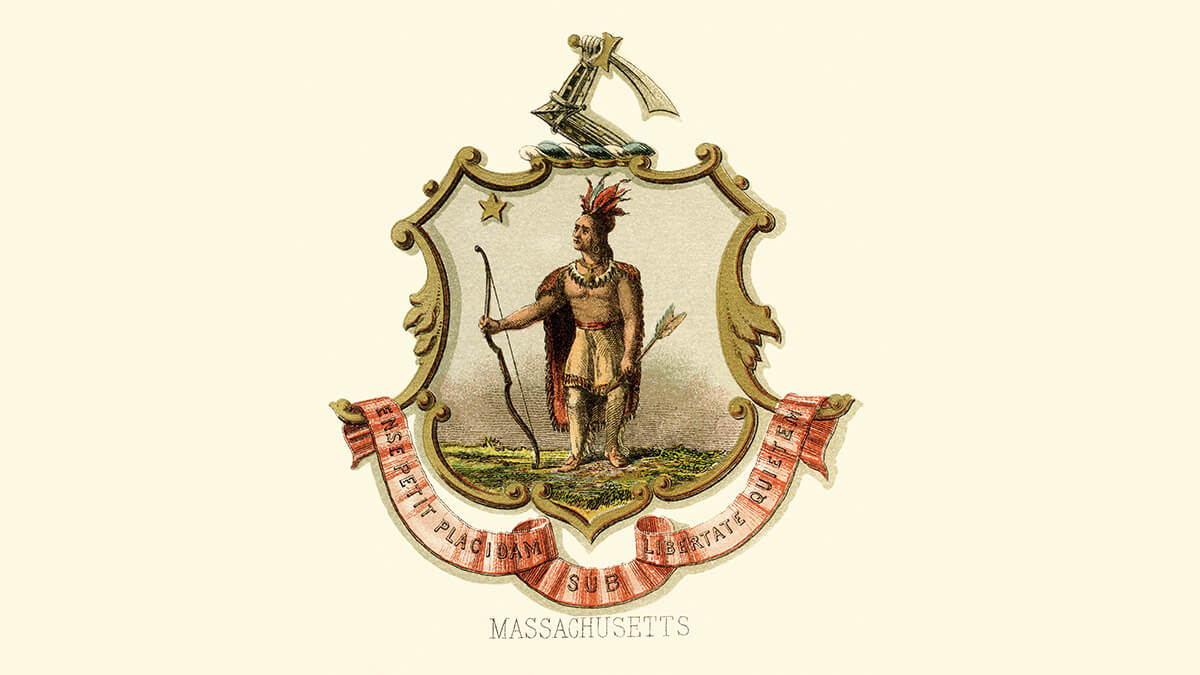Composition
The Massachusetts flag features a field of white charged with the commonwealth coat of arms in blue and gold, off-centered towards the hoist.

The Massachusetts flag was the first state (commonwealth) flag to feature a plain white field and, for about 50 years, was a rare two-sided design.
The flag (and the seal) have received criticism for its depiction of a Native American man beneath a faceless arm weilding a broadsword. There is still pressure for Massachusetts to make changes to these symbols.
The current flag was officially adopted July 3, 1971.
The Massachusetts flag features a field of white charged with the commonwealth coat of arms in blue and gold, off-centered towards the hoist.

Native peoples
peace (pointed downward)
Massachusetts, an original colony
peace only under liberty
“By the Sword We Seek Peace, But Peace Only Under Liberty”
The Massachusetts coat of arms was adopted in 1775. Inscribed in Latin on the ribbon are the words “Ense petit placidam sub libertate quietem” which translate to “By the Sword We Seek Peace, But Peace Only Under Liberty.”
Despite the claim that the broadsword references the commonwealth motto, the imagery of an Algonquin man beneath an arm weilding a sword has caused a great deal of pain, reminding many of the violence inflicted on Native Americans.

The Secretary of the Commonwealth provides color values for the flag.
The blue of the flag represents the Blue Hills of Canton. The five-pointed star is white, unlike the seal where it appears silver.
The Secretary of the Commonwealth provides specifications for the flag, recreated here.
The flag can be produced with a few proportions, but 3:5 is recommended.

Before 1971, the Massachusetts flag had a different design on its reverse. It featured the blue shield with a pine tree.
With the importance of timber in the region, the pine tree became a symbol of New England. After the Pine Tree Riot in 1772, it persisted as an emblem for resistance and independence.
